Have you ever wondered why some individuals feel paranoid after using weed? It’s a common experience for many users, and understanding its reasons can shed light on the complex relationship between cannabis and the brain. The psychoactive compound in weed, tetrahydrocannabinol (THC), interacts with various brain regions, leading to a range of effects, including relaxation, euphoria, and in some cases, paranoia.
While THC affects everyone differently, several factors contribute to why some people may feel paranoid after using weed. Individual differences in response to cannabis play a significant role, as each person’s brain chemistry and sensitivity to THC can vary. Additionally, anxiety and paranoia are recognized side effects of cannabis use, particularly in higher doses. However, it’s important to note that not everyone experiences these adverse effects, and some individuals may even find relief from anxiety when using weed. Understanding the reasons why weed can induce paranoia can help individuals make informed decisions about their cannabis use and explore strategies for mitigating these effects.
The Effects of THC on the Brain
You may be wondering why weed can cause feelings of paranoia in specific individuals, and this can be attributed to the effects of THC on the brain. THC, or tetrahydrocannabinol, is the primary psychoactive compound found in marijuana. When THC enters the body, it interacts with the endocannabinoid system in the brain, specifically the CB1 receptors. These receptors regulate various functions such as mood, memory, and perception.
When THC binds to the CB1 receptors, it can disrupt the normal functioning of these receptors. This disruption can lead to an imbalance in the brain’s neurotransmitters, particularly serotonin and dopamine. Serotonin is a neurotransmitter that regulates mood, while dopamine is associated with pleasure and reward.
The imbalance caused by THC can increase anxiety and paranoia. This is because the disrupted serotonin levels can lead to feelings of unease and heightened sensitivity to perceived threats. The altered dopamine levels can also contribute to an exaggerated sense of fear and negative thoughts.
Not everyone experiences paranoia when using weed, as individual responses can vary. Factors such as dosage, frequency of use, and personal susceptibility can all play a role in determining how THC affects an individual. If you find that weed consistently triggers feelings of paranoia, it may be best to avoid or limit its use to prevent any negative psychological effects.
Individual Differences in Response to Cannabis
Contrary to popular belief, cannabis can elicit varying responses in individuals. While some people may experience feelings of relaxation and euphoria when using weed, others may feel anxious, paranoid, or even have panic attacks. The reason for these individual differences in response to cannabis is not fully understood. Still, it is likely due to a combination of factors, including genetics, past experiences, and the specific strain and dosage of cannabis consumed.
Genetics play a role in how an individual’s body processes and reacts to THC, the main psychoactive compound in cannabis. Some people may have a genetic predisposition to be more sensitive to the effects of THC, which can increase the likelihood of experiencing paranoia or anxiety. Additionally, past experiences with cannabis or other substances can also influence how a person responds to weed. If a person has had negative experiences or has a history of anxiety or paranoia, they may be more prone to these feelings when using cannabis.
Furthermore, the specific strain and dosage of cannabis consumed can also impact the likelihood of experiencing paranoia. Different strains of cannabis have varying levels of THC and other cannabinoids, which can affect the overall experience. High-THC strains are more likely to induce anxiety and paranoia, while strains with balanced levels of THC and CBD may have a more calming effect. Additionally, the dosage of cannabis consumed can also play a role. Higher doses are more likely to induce adverse effects, while lower doses may be more manageable for individuals prone to paranoia.
In conclusion, the varying responses to cannabis can be attributed to genetic factors, past experiences, and the specific strain and dosage consumed. It is vital for individuals to be aware of their own sensitivities and to choose strains and dosages that are more likely to result in a positive experience. Additionally, seeking professional advice and guidance can help individuals navigate their response to cannabis and minimize the risk of experiencing paranoia or anxiety.
Anxiety and Paranoia as Side Effects
Interestingly, when using cannabis, it can sometimes cause feelings of anxiety and paranoia in specific individuals. While many people enjoy weed’s relaxing and euphoric effects, others may experience heightened levels of anxiety and paranoia. This can be attributed to the way cannabis interacts with the brain’s endocannabinoid system, which is responsible for regulating mood and emotions.
When THC, the psychoactive compound in cannabis, enters the body, it binds to the cannabinoid receptors in the brain. This interaction can increase the release of certain neurotransmitters, such as dopamine and norepinephrine. These neurotransmitters play a role in regulating emotions and can affect anxiety levels. For some people, this increase in neurotransmitter activity can trigger feelings of anxiety and paranoia.
Additionally, cannabis can also affect the amygdala, the part of the brain responsible for processing emotions and fear. Studies have shown that THC can increase activity in the amygdala, leading to heightened feelings of fear and anxiety. This may explain why some individuals experience paranoia while under the influence of cannabis.
It is important to note that not everyone will have the same response to cannabis. Individual factors such as genetics, previous experiences, and mental health conditions can all influence how a person reacts to the drug. If you find that cannabis consistently causes feelings of anxiety and paranoia, it may be best to avoid or limit your use.
Environmental Factors and Set/Setting
Surroundings and personal mindset greatly impact the potential for paranoia when using marijuana. Environmental factors such as being in an unfamiliar or uncomfortable setting can contribute to feelings of anxiety and paranoia. For example, being in a crowded or noisy environment may heighten feelings of paranoia, as the individual may feel overwhelmed or unable to control their surroundings. On the other hand, a calm and familiar environment can help reduce feelings of paranoia and create a more relaxing experience.
Additionally, an individual’s mindset and emotional state before using marijuana can also play a role in the development of paranoia. If someone is already anxious or stressed, marijuana can amplify these emotions and increase the likelihood of experiencing paranoia. Similarly, if someone tends to be more prone to anxious thoughts or has a history of anxiety disorders, they may be more susceptible to paranoia when using marijuana.
The environment in which marijuana is consumed, and an individual’s mindset before use are important factors to consider when exploring why some people experience paranoia when using weed. By creating a comfortable and familiar setting, and being mindful of one’s emotional state, individuals can help minimize the potential for paranoia and have a more positive experience with marijuana.
Strategies for Reducing Paranoia While Using Cannabis
To mitigate paranoia while using cannabis, individuals can employ various strategies. One effective method is to start with a low dose and gradually increase it over time. By starting with a small amount of cannabis, individuals can gauge their tolerance and minimize the risk of experiencing paranoia. Additionally, using cannabis in a comfortable and familiar environment can help reduce feelings of anxiety and paranoia. Creating a calm and relaxing atmosphere, such as dimming the lights, playing soothing music, or engaging in activities that promote relaxation, can contribute to a more positive cannabis experience.
Another strategy for reducing paranoia while using cannabis is to engage in activities that distract the mind and redirect negative thoughts. This can include watching a favorite movie or TV show, listening to music, doing puzzles, or engaging in creative activities such as drawing or painting. By focusing on enjoyable and stimulating activities, individuals can shift their attention away from paranoid thoughts and alleviate anxiety. Additionally, seeking support from trusted friends or loved ones can provide reassurance and comfort during a cannabis session. Having someone present who can provide a calming presence and help redirect negative thoughts can greatly contribute to a more positive and relaxed experience.
Can Weed Induce Paranoia in Some People?
Yes, weed can induce paranoia in some individuals. This is often a result of the THC compound found in weed and tiredness effects. When combined, they can lead to heightened anxiety and paranoid thoughts. It’s important for individuals to be aware of these potential effects and use caution when using weed.
Conclusion
The experience of paranoia while using cannabis can vary significantly among individuals. This is due to the effects of THC on the brain and individual differences in response to the drug. While some people may feel a sense of relaxation and euphoria when using cannabis, others may experience heightened anxiety and paranoia.
Environmental factors and set/setting can also significantly increase the likelihood of experiencing paranoia while using cannabis. Creating a comfortable and safe environment and being in a positive mindset can help reduce the chances of feeling paranoid. Additionally, using lower THC strains or products, starting with small doses, may help mitigate the risk of paranoia. Understanding the mechanisms behind some people experiencing paranoia while using cannabis can help individuals make informed decisions and take necessary precautions to ensure a positive and anxiety-free experience.
Frequently Asked Questions
Can marijuana use lead to long-term paranoia or anxiety?
Marijuana use can lead to long-term paranoia or anxiety in some individuals. While not everyone experiences these effects, it is possible for prolonged use to contribute to the development of these conditions.
What are some common triggers for marijuana-induced paranoia?
Some common triggers for marijuana-induced paranoia include high levels of THC, personal vulnerability, pre-existing anxiety or mental health conditions, negative past experiences with marijuana, and being in an unfamiliar or stressful environment.
Are there certain strains of marijuana that are more likely to cause paranoia?
Yes, certain strains of marijuana are more likely to cause paranoia. Sativa strains, known for their uplifting and energizing effects, tend to have higher levels of THC, which can contribute to feelings of anxiety and paranoia in some individuals.
Can using marijuana in a different environment or setting reduce the likelihood of experiencing paranoia?
Using marijuana in a different environment or setting may help reduce the likelihood of experiencing paranoia. Changing the surroundings can create a more relaxed atmosphere, potentially minimizing any anxious or paranoid feelings that may arise.
Are there any medications or techniques that can help alleviate marijuana-induced paranoia?
Yes, some medications and techniques can help with marijuana-induced paranoia. Some medications, such as antipsychotics, may be prescribed by a doctor. Relaxation techniques, like deep breathing or meditation, can also provide relief.

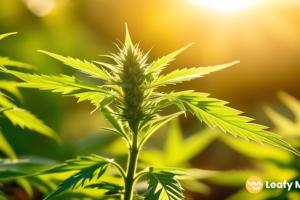
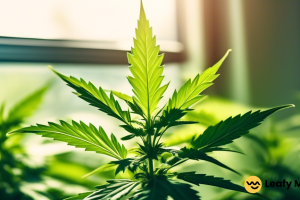





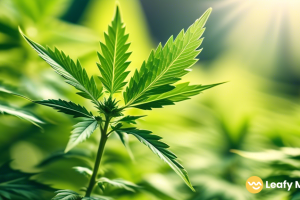
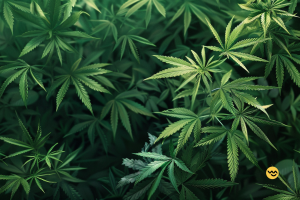
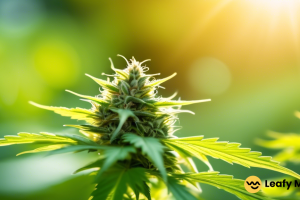
Leave a Reply